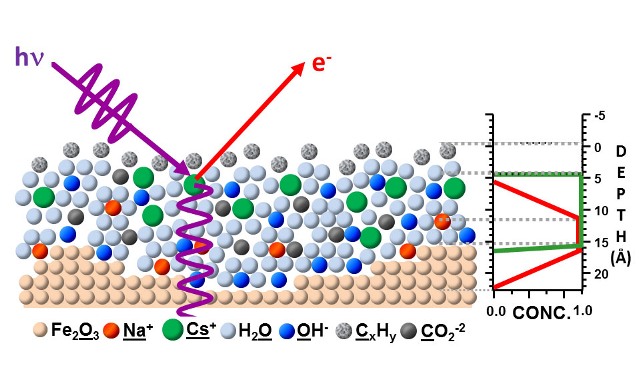Dec 5 2014
 By utilizing X-ray standing waves to excite photoelectrons, SWAPPS delivers vital information about all the chemical elements at the heterogeneous interfaces found in batteries, fuel cells and other devices.
By utilizing X-ray standing waves to excite photoelectrons, SWAPPS delivers vital information about all the chemical elements at the heterogeneous interfaces found in batteries, fuel cells and other devices.
Researchers at Lawrence Berkeley National Laboratory (Berkeley Lab) have combined the standing-wave photoelectron spectroscopy (SWPS) technique with the high ambient pressure photoelectron spectroscopy (APPS) technique to create standing wave ambient pressure photoelectron spectroscopy (SWAPPS) - a new technique for studying chemical elements at heterogeneous interfaces.
The SWAPPS technique provides sub-nanometer resolution of chemical elements at heterogeneous interfaces under realistic pressure conditions. This new technique includes the advantages offered by X-ray photoelectron spectroscopy without the need for an ultra-high vacuum, which allows it to be used for measuring interfaces between solids and volatile liquids.
X-rays are good at probing chemical processes. The SWPS technique enables selective study of buried interfaces using hard or soft X-rays. The APPS technique enables use of X-ray photoelectron spectroscopy under conditions similar to those in practical environments.
Heterogeneous processes occur widely at interfaces between solids, liquids and gases and their quantitative study is difficult. The researchers used SWAPPS to study a system where a nanometer-thick layer of aqueous electrolyte of cesium hydroxide and sodium hydroxide was grown on a solid hematite.
They observed that most cesium ions were not in contact directly with the solid/liquid interface, while the sodium ions were located nearer to the interface of the iron oxide/solution. A hydrophobic carbon species and a hydrophilic carbonate species were discovered.
Customization of the X-ray wave field by the researchers into a standing wave helped achieve more depth sensitivity in the spectroscopy technique. The researchers added that in the future, time-resolved SWAPPS studies employing free-electron laser sources, would allow femtosecond time scale analysis of the processes that occur at the interfaces.
The new SWAPPS technique has been published in Nature Communications.